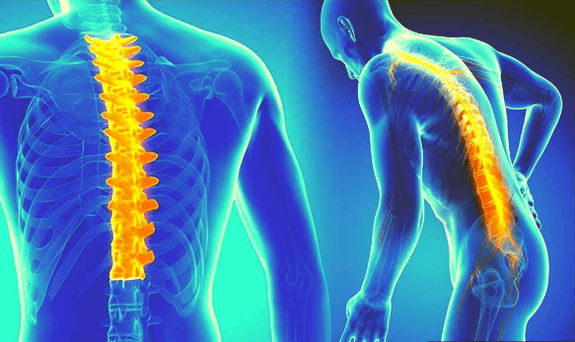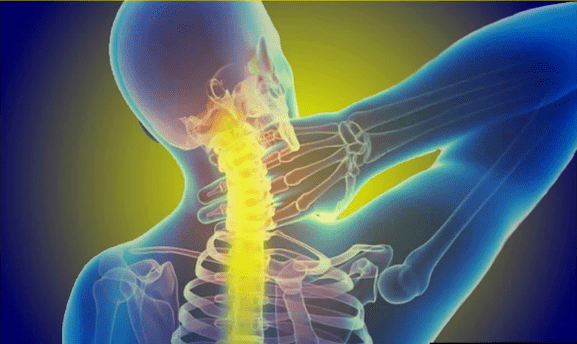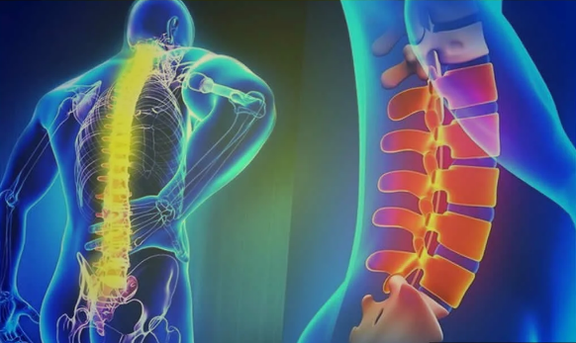
The problem of cervical osteochondrosis: symptoms, diagnoses and methods of spine treatment are important for a large number of people over 35 years of age.Although young people also experience this problem.The fault of a modern lifestyle seated and you can not get anywhere in essence.Office-Stol-Komputer-Divan and vice versa.
What does osteochondrosis mean
The term osteochondrosis went from the Greek language ὀστέον - bone and χννδρος - cartilage.In the end, the suffix -osis was added.As a result, it turned out: osteo (bone) hondra (cartilage) osa (not an inflammatory disease). It will be like this in a simple language - this is not an inflammatory disease of the soft bone system.
The term osteochondrosis has become a synonym for any pain in the back.Back to hurt?- so you have osteochondrosis, my friend.
Reasons for developing osteochondrosis
The problems of osteochondrosis are not only a cause for the appearance.The reasons are different dysfunctional situations for the spine:

- Overload, if you take the cervical spine, this is the most mobile spine and one way or another experiences the largest dynamic loads, that is, it has the greatest movement for life;
- Static load - this is a sitting job, for example;
- hard work - occupational disease;
- adverse inheritance situations;
- General data Age factor and aging.
Age not always plays a single role, but as they say, we begin to delete from the moment of birth or, at least from the moment of puberty.Therefore, age also plays an important role.
Osteochondrosis is a radiological condition, ie, it must be confirmed by an X -ray.In principle, if you really want, then changes in the back that are suitable for the term osteochondrosis can be found in any person over 30-35 years.
Symptoms of osteochondrosis
It is very difficult to say that it is osteochondrosis that causes certain pain in the back.Because acute pain syndrome most often in the cervical spine gives muscle spasm, that is, spasm of the collar area.
Muscle spasms can give chronic pain of another condition:
- Spondylosis, increased bone spondylolistz (osteophytes);
- Vertebral displacement;
- Instability in the cervical spine;
- The bear and the extension of the discs.
Osteochondrosis is more of a background condition and can rarely give some symptoms.
Most often osteochondrosis is combined with any other factor.It can give any pain from the neck and radiate the neck roots of the area:
- Neck pain,
- Pain in hand or pain in two hands,
- Pain in the neck and head.
The symptoms of pain do not even manifest:
- Numbness and weakness in the hands,
- Noise in the head.
Osteochondrosis itself cannot give such sensations.These sensations cause other states to be sought and excluded.
For example, NUMBERS IN THE HAND CAN BE CALLED:
- Tunnel syndrome;
- a hernia of a disk, which is not always visible on an X -Ray examination;
- Manifestations of diabetes;
- manifestations of toxic lesion from the nervous system;
- Vascular diseases.
Accordingly, it is necessary to undergo a thorough neurological examination in order to identify a pathological condition leading to complaints of pain.
Although, unfortunately, in modern conditions, when doctors about "time limits" and a long bad line in the hallway, it is easier to make a diagnosis - osteochondrosis than to seek and identify the true causes of pain.
So massive household medicine actually works, which forces people from hopelessly to diagnose the disease (Fortunately for paid clinics) and describe treatment for ourselves (Again, the Internet helps).
Diagnosis of osteochondrosis

Osteochondrosis diagnostic ISSUES is based on an X -Ray study: Radiography, MRI, CT. The last two studies are not X, but help to diagnose the problem well.
There must be a thorough neurological examination to exclude other states that cause pain.
The treatment of osteochondrosis
Conservative treatment methods:
- Non -steroidal anti -inflammatory drugs are used standards;
- use of muscle relaxants to reduce muscle tone;
- the use of group B vitamins;
It is necessary to use non -DRrug treatment methods:
- Physical therapeutic culture (exercise therapy) -Determine the main method of treating diseases of the musculoskeletal system.
- Physiotherapy - has been replaced to relieve pain and rehabilitation.
- Massage - relieves muscle tension, muscle pain, improves muscle blood circulation.
- Manual therapy -The individual manual effect in the bone-muscular system for the removal of acute and chronic pain in the spine and joints.
- Spine.
- Use APPELLANT.
In addition, they use it Gel, ointments, mustard, jars And similar Folk remedies For home treatment.
Thank you for reading and a little more you understood the term "osteochondrosis".



















